3 Types of Content You Need for Better Sales
When it comes to creating content for your Alameda business, you’re looking for two types—that which engages and that which educates those interested in what you offer. Engaging content is the easy stuff; things like image memes, simple questions, quotes, and fun pieces that people respond to on social media as they’re looking to escape work. Engaging content helps people get to know your company. Think of it as the small talk of the digital content world.
But the content that converts, the stuff that will bring you the sales and the deeper interest, is not an image meme or a cat video (unless you sell cats). For content that converts you need to provide resources to help potential customers make a buying decision. The key to success with these pieces is to be helpful, not salesy. These are resources for buyers, not brochures for your company.
Here are a few suggestions on what should be in your content tool kit.

The following pieces, when done well, will help you move potential customers deeper into your sales funnel by giving them the resources they need to make an educated buying decision. This content should be available on your website because most consumers start researching long before they approach you for information about your company or product/service. According to GE Retail Capital Bank, that number is around 81%.
While you want to give content away for free so that the largest number of people can benefit from it, it’s a good idea to have something that is gated. They can download it in exchange for a name and an email address. This is called a lead magnet and it’s a solid way to build your email list so you can make people aware of special promotions and other ways that you’ll drive sales.
If your website visitor is downloading one of your resources, they’re not kicking tires. They’re looking to buy. The question is whether it will be from you or your competition. If you don’t get a name and an email, you won’t be able to keep in touch and that’s a lost opportunity.
But what kind of content is valuable enough that someone will want to exchange their information for it? We have three ideas for you:
A Checklist
No one reads anymore. The world is moving at hyper speed and most people prefer to skim, that’s why checklists are really popular.
Topics you might consider include:
- Five Things to Know (or Do ) Before Purchasing a <insert your product>
- 10 Critical Questions to Ask Your (self, salesperson, significant other) Before Buying a <insert your product>
- Safety Checklist for (whatever you sell, such as “Your New Home” or “Teen Drivers” if you sell insurance)
A Guidebook
If your sales process is a long one or if there are things that must be considered, weighed, or other important information necessary to make the purchase, create an online purchasing guidebook. Walking your potential customer through everything they need to consider is not only a relief to them, but it also helps you frame the right questions and concerns that place your business in the best light ahead of your competition. For instance, if you know your competitor is weak in a certain area, you can talk up the importance of that area.
If a guidebook doesn’t quite fit your business, you can create an eBook on just about any topic. For instance, an attorney might create an eBook on understanding workplace harassment. In this case, as an attorney, you might represent several fields of law. When someone downloads a specific guidebook you know what area interests them most and you can tailor future communications to them on that topic.
A Comparison Sheet
Why should someone buy from you or work with you? If there are a lot of moving parts to the sales cycle or if you work in a crowded industry, helping your potential customers by comparing your services or product with the competition can go a long way to making the customer feel like you care about what’s best for them.
But if you want to create an effective comparison sheet you need to keep the bias at bay. Don’t drag your competition through the mud and then tell everyone you’re perfect. Even if it’s true, no one will believe you. Instead, try conceding a weakness up front and then hitting them with strengths. This helps establish trust early on because you’re doing something no one expects—helping without thought to your own business. For instance, if you sell software and your pricing is the same regardless of how many users your customers have, a very small business may pay more with you than your competition which charges by seat license. If your product is more cost-effective for larger operations, say that. It establishes trust and as that small business grows, they may seek you out when they have more users.
A Final Word About Content That Sells
When creating content for your business, your goal is to get people to know, like, and trust you. You do this by sharing content that engages, inspires, and educates. The first two types of content will get people to know and like you. To be trusted give them resources the buyer can use to make an educated buying decision. If you want to fully be trusted you need to admit, sometimes you’re the best option and sometimes you aren’t. By doing this, you may lose this sale but you will build a tribe of people who want to do business with you (in the future). This will then inspire them to pass along to their network how helpful and different your business is. A word-of-mouth referral is the gold standard of marketing these days and building trust is a great way to get it.
